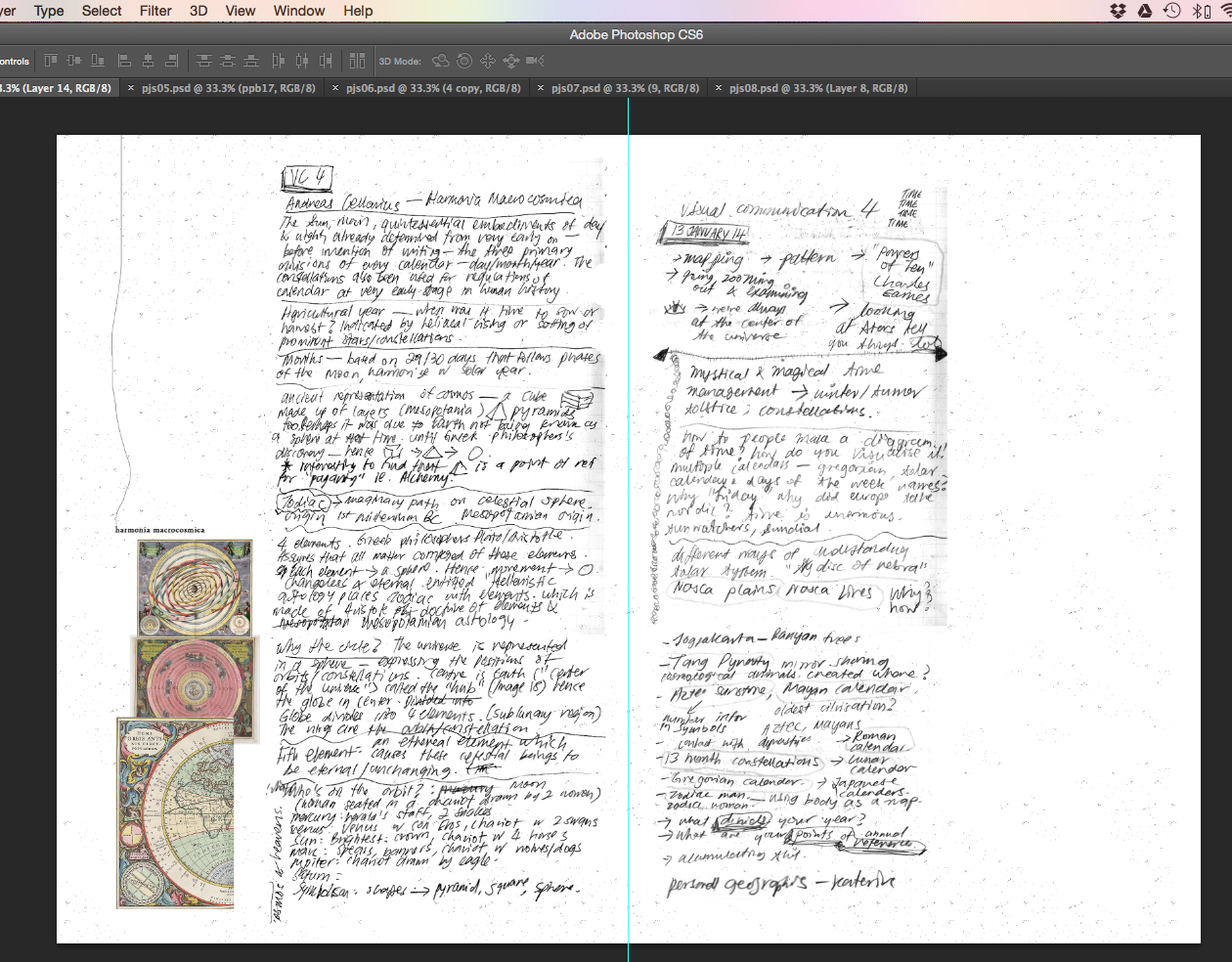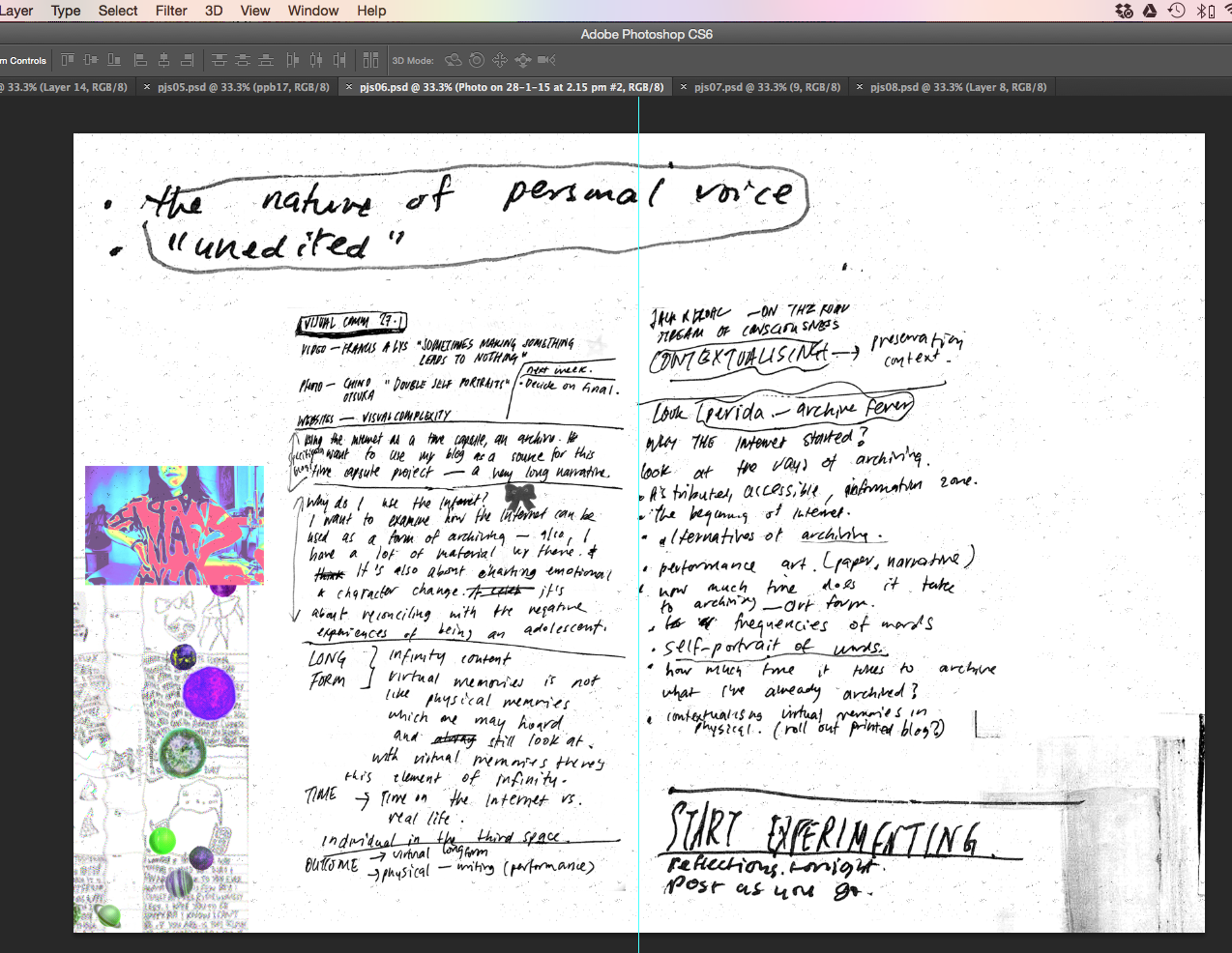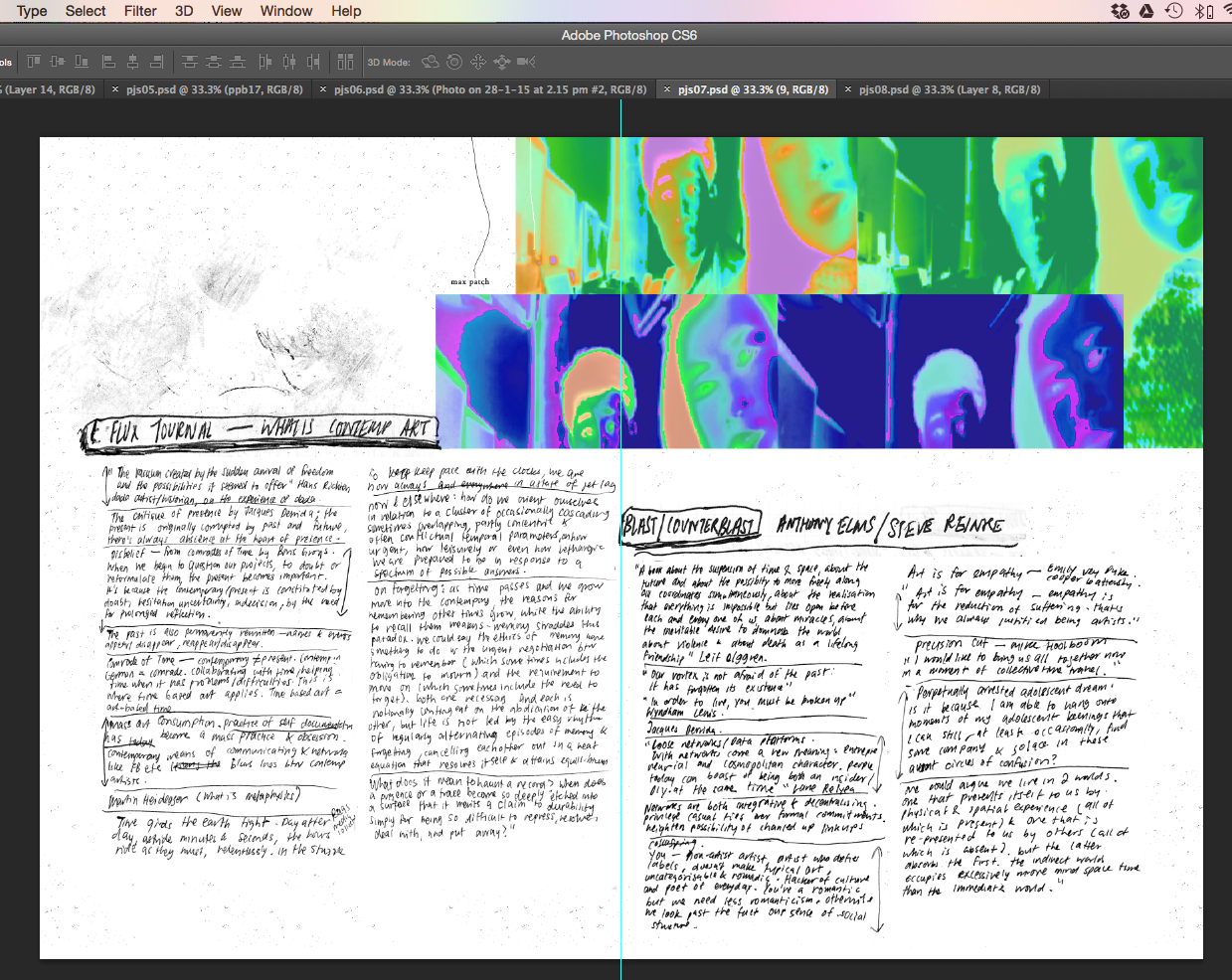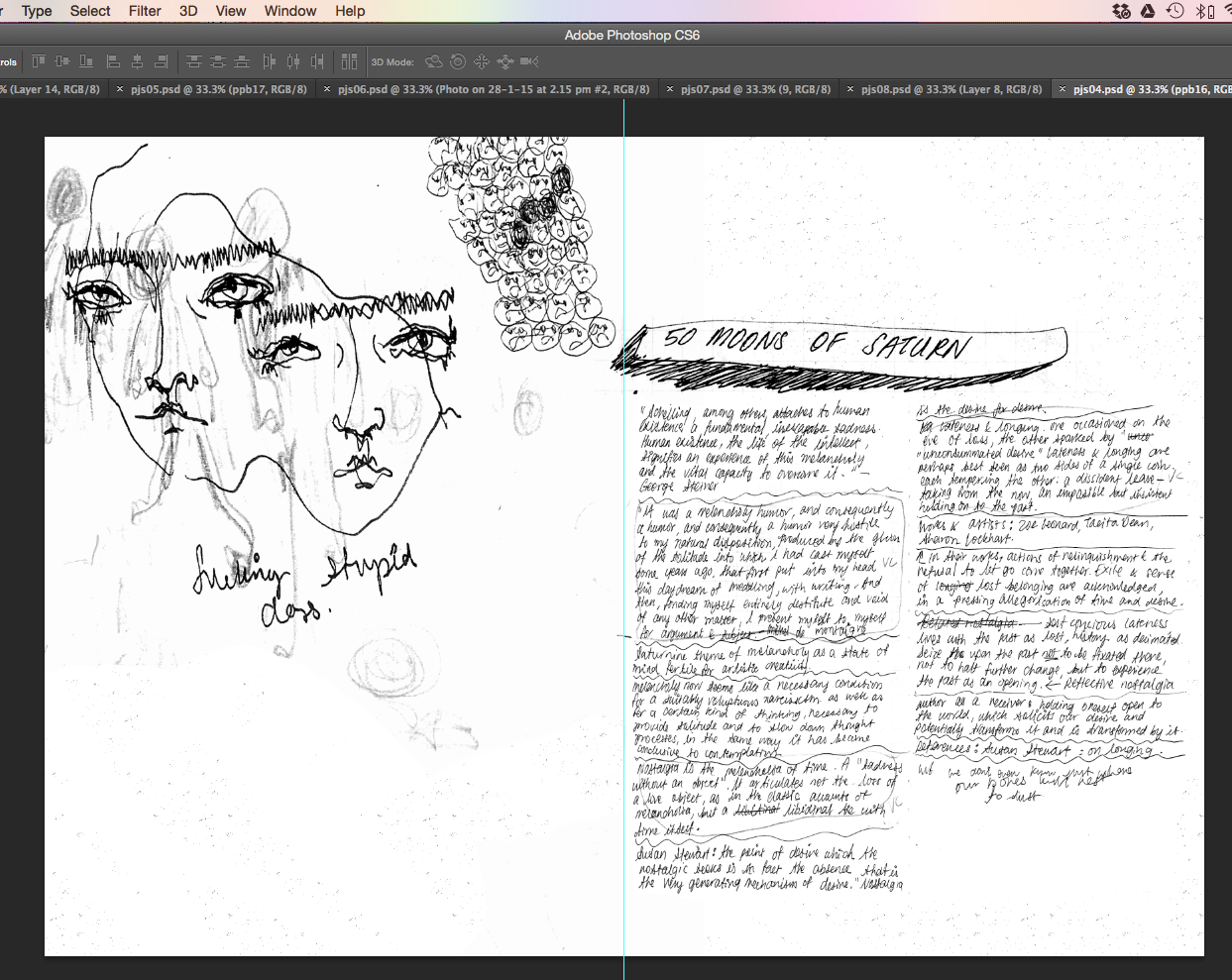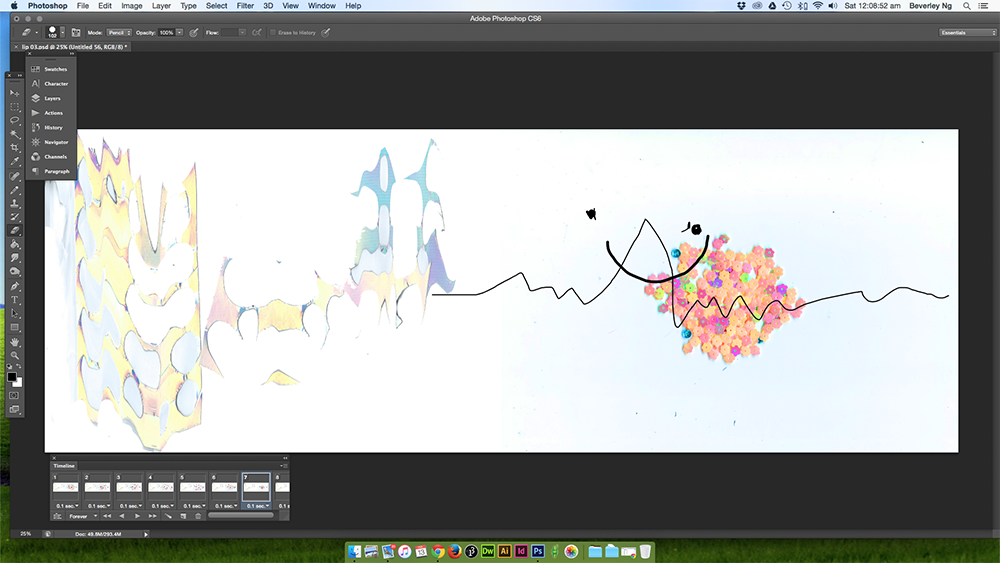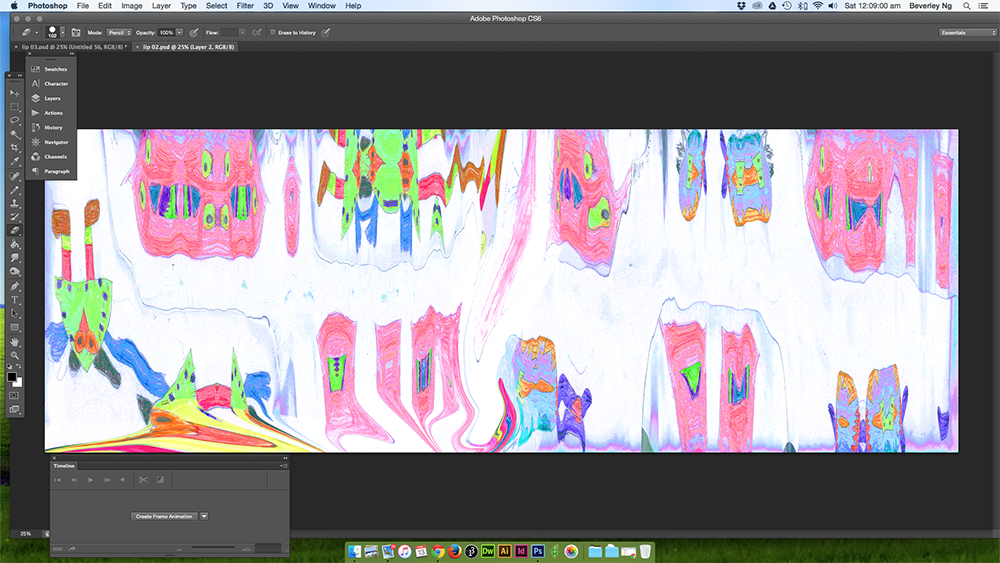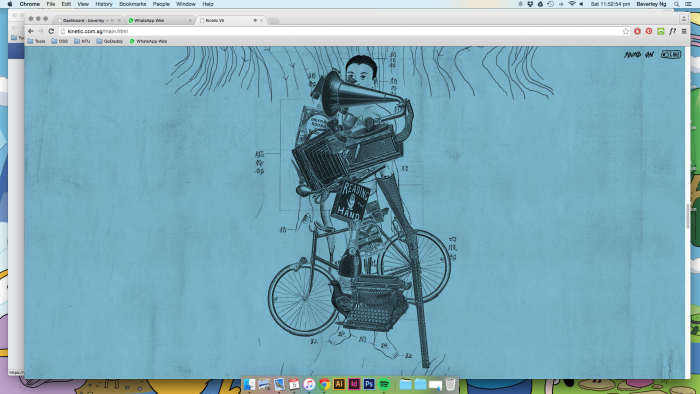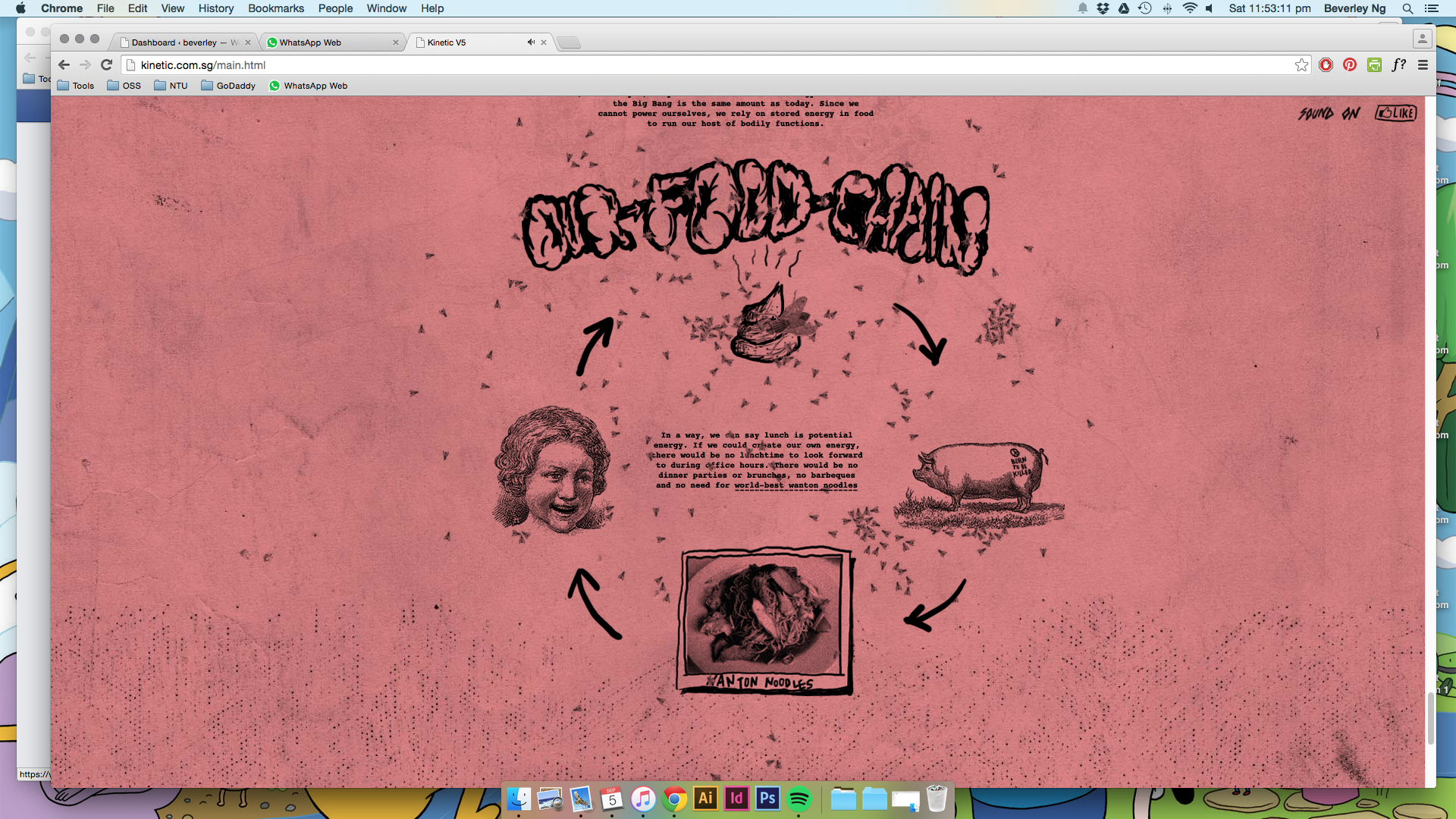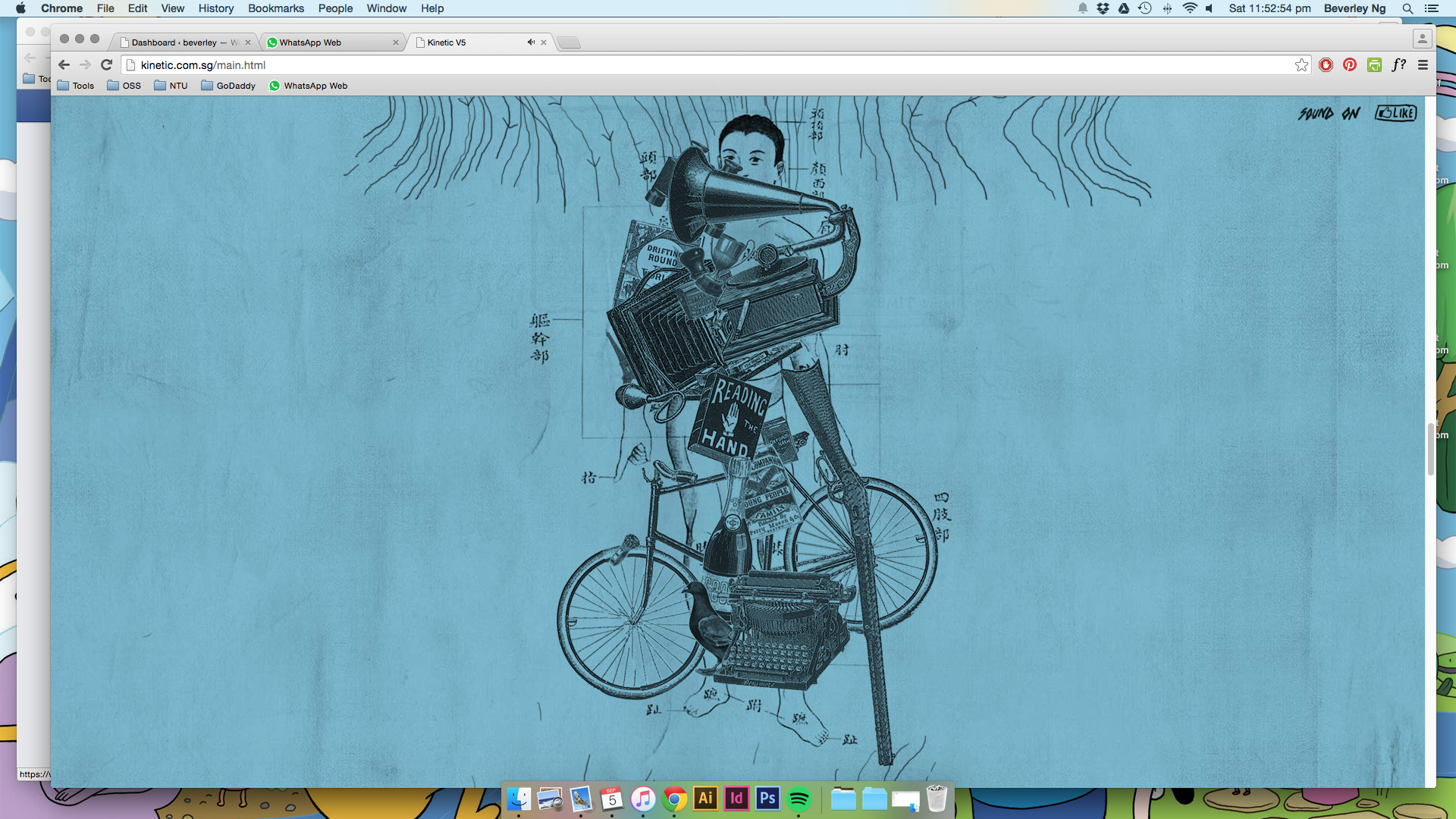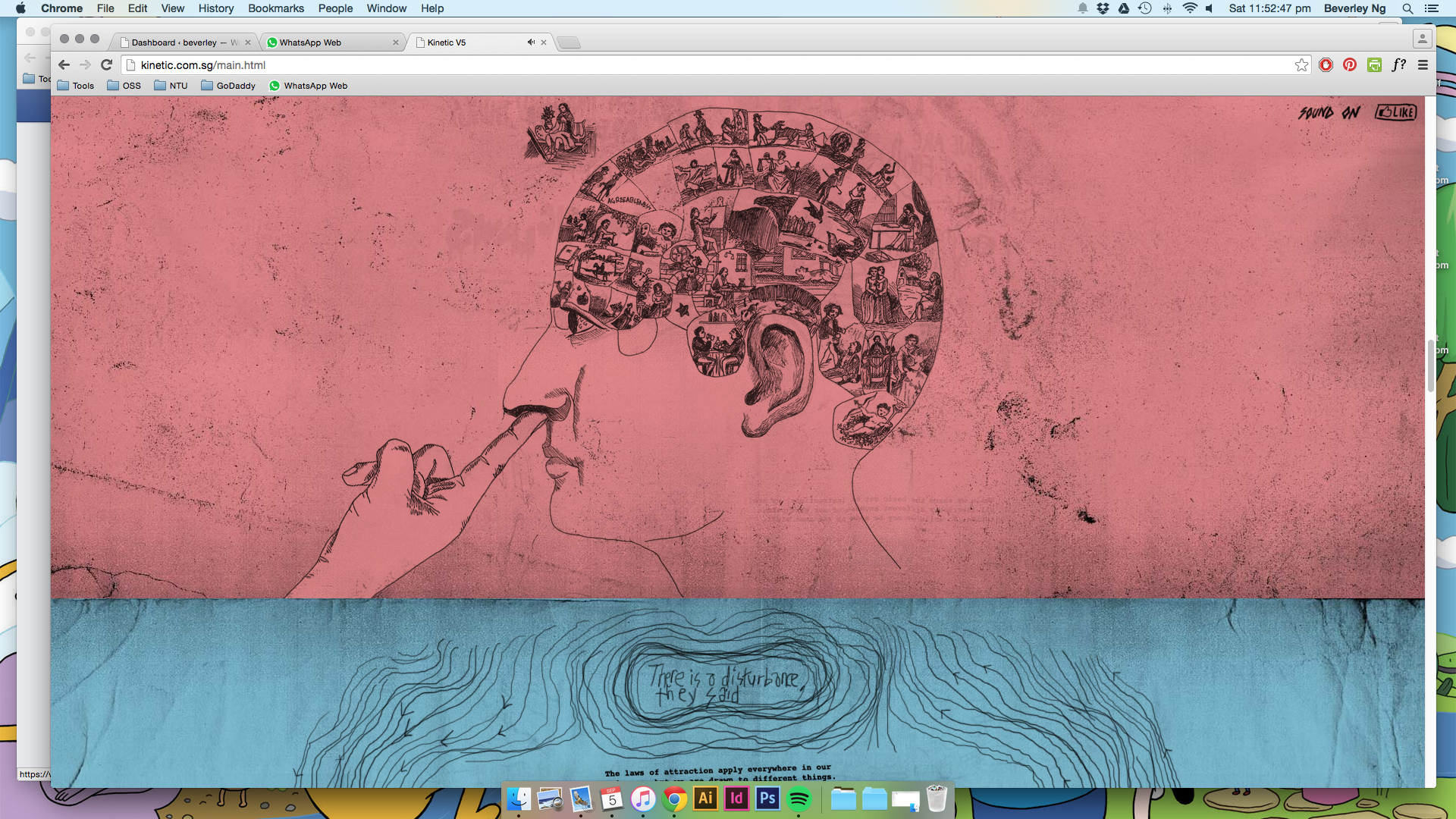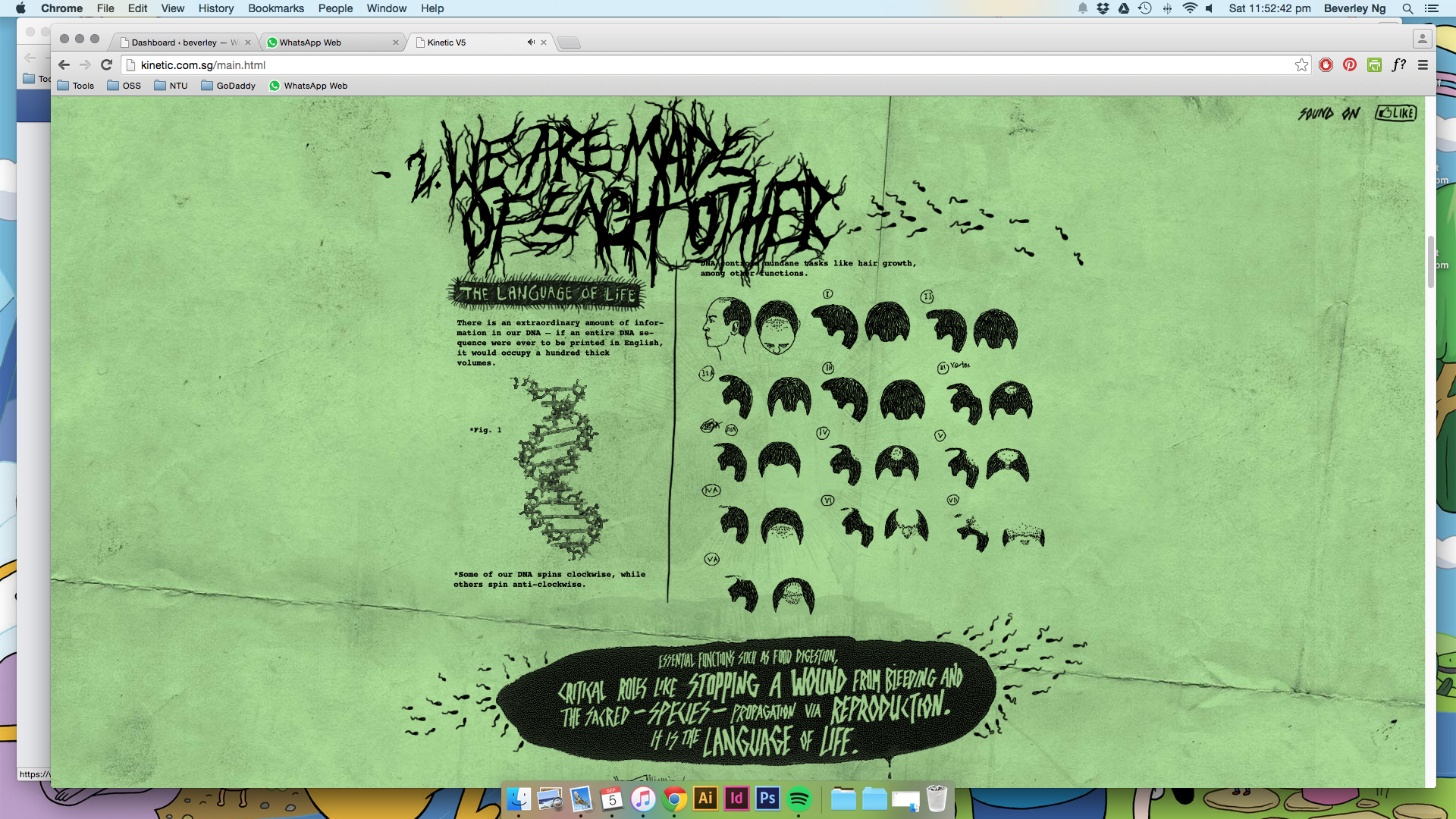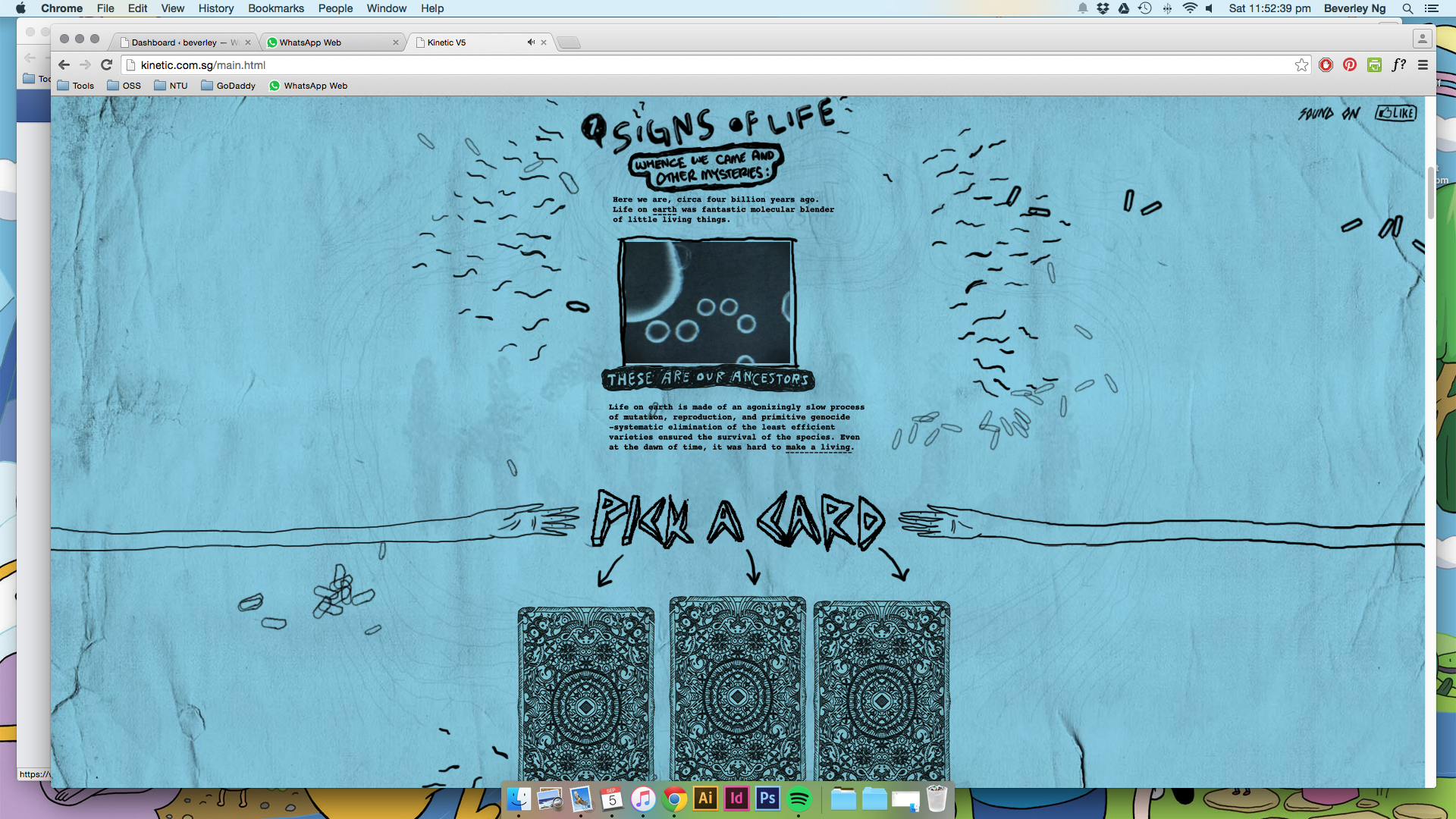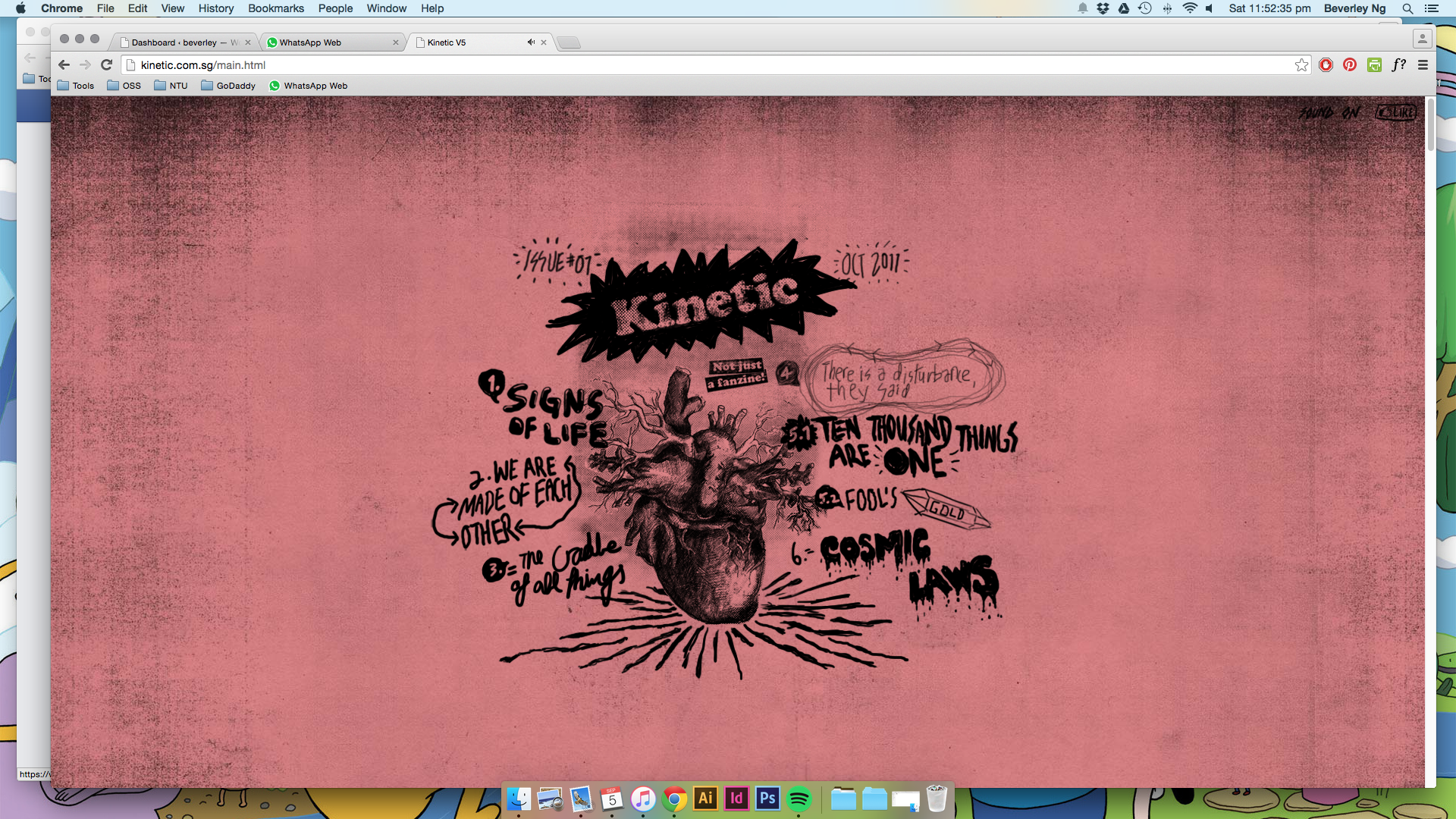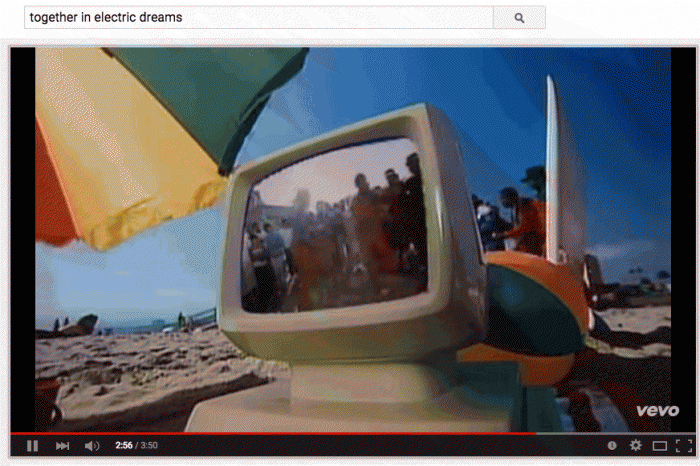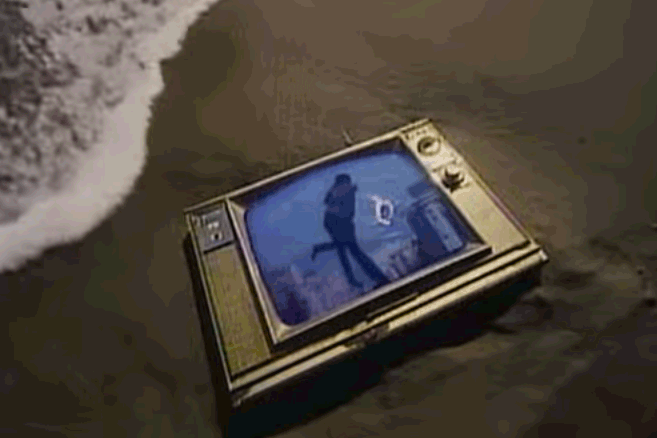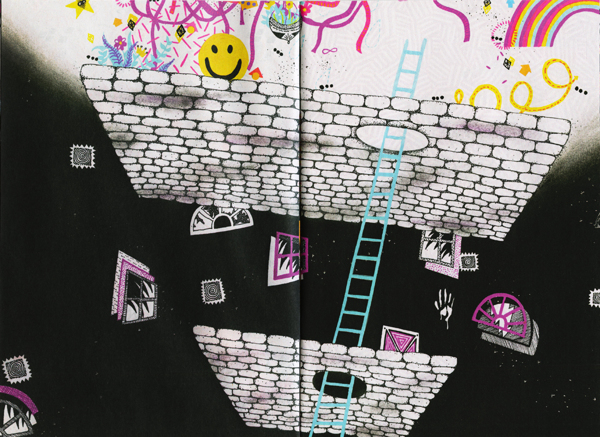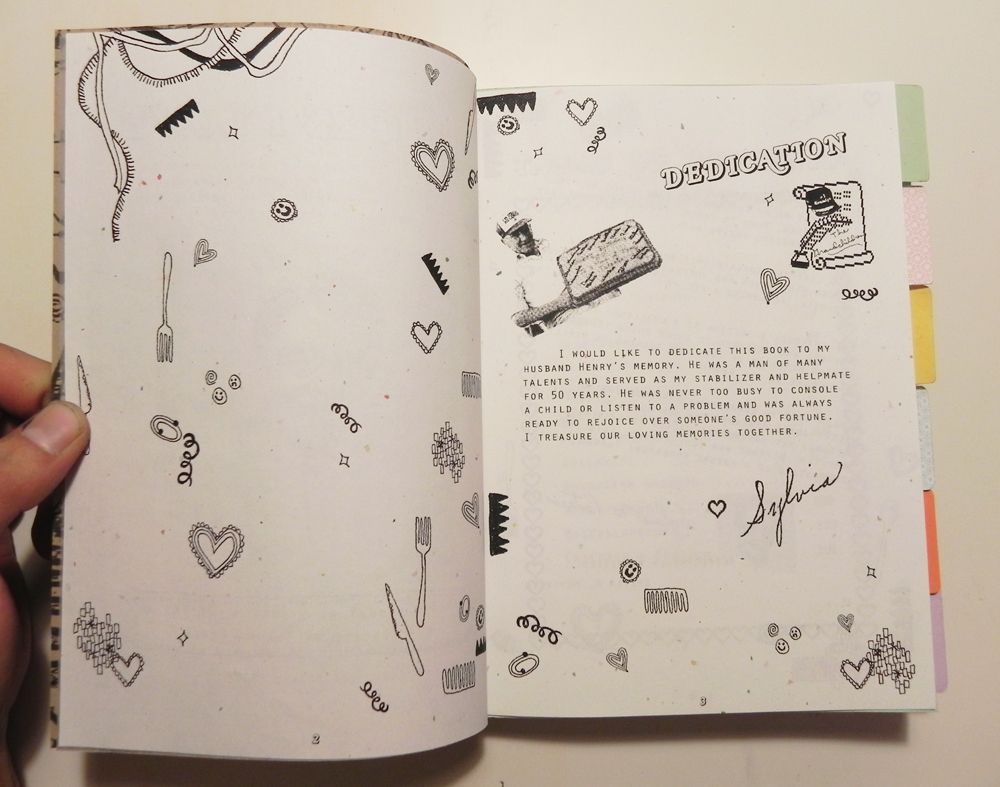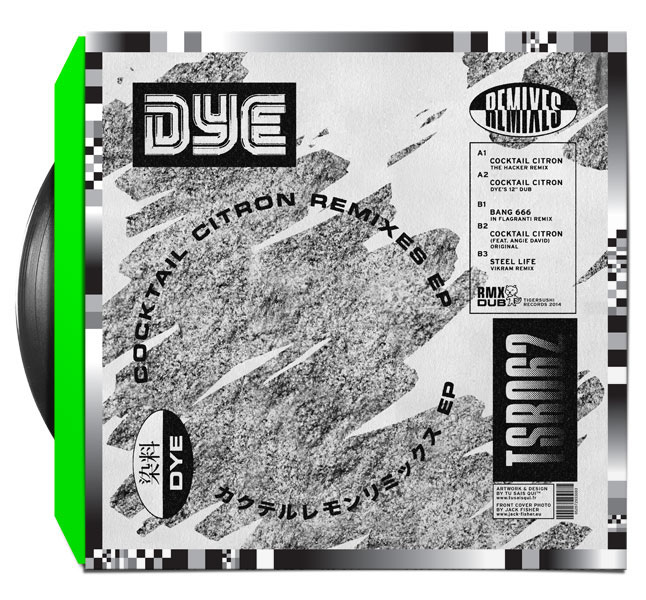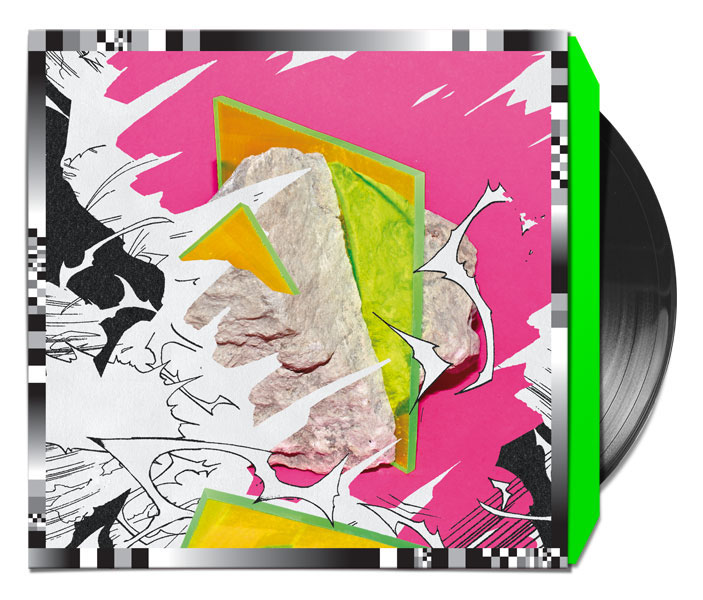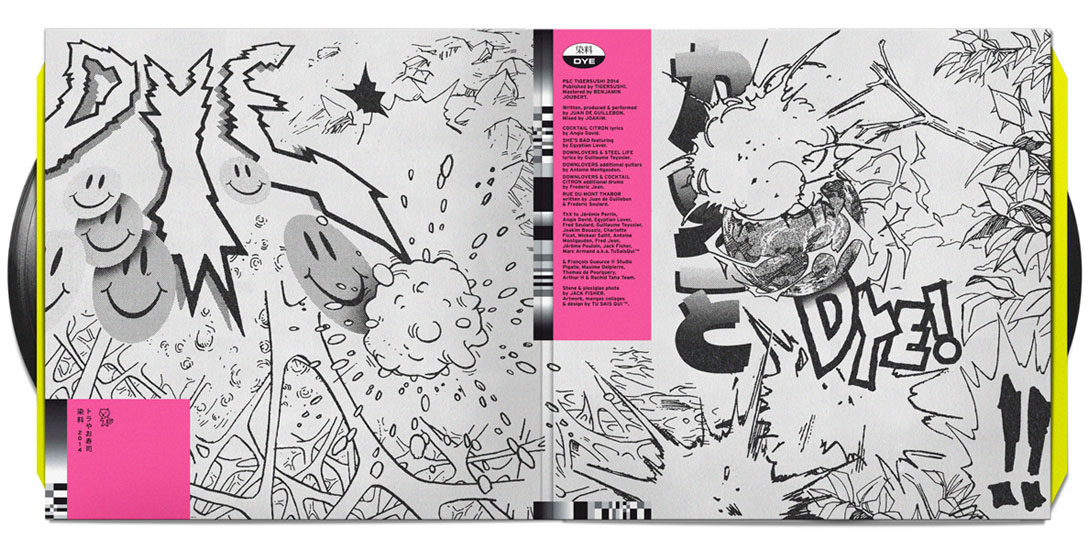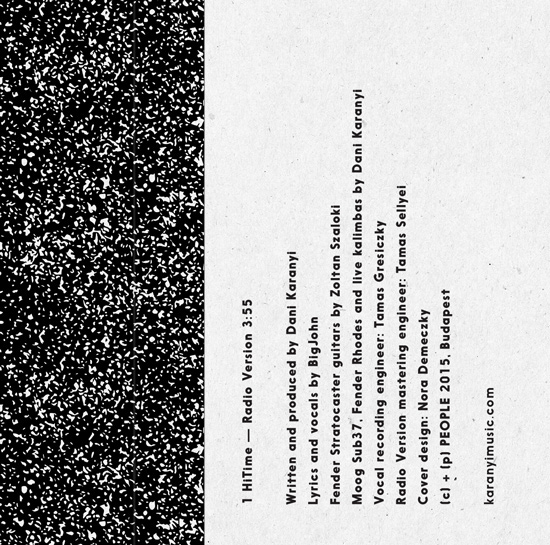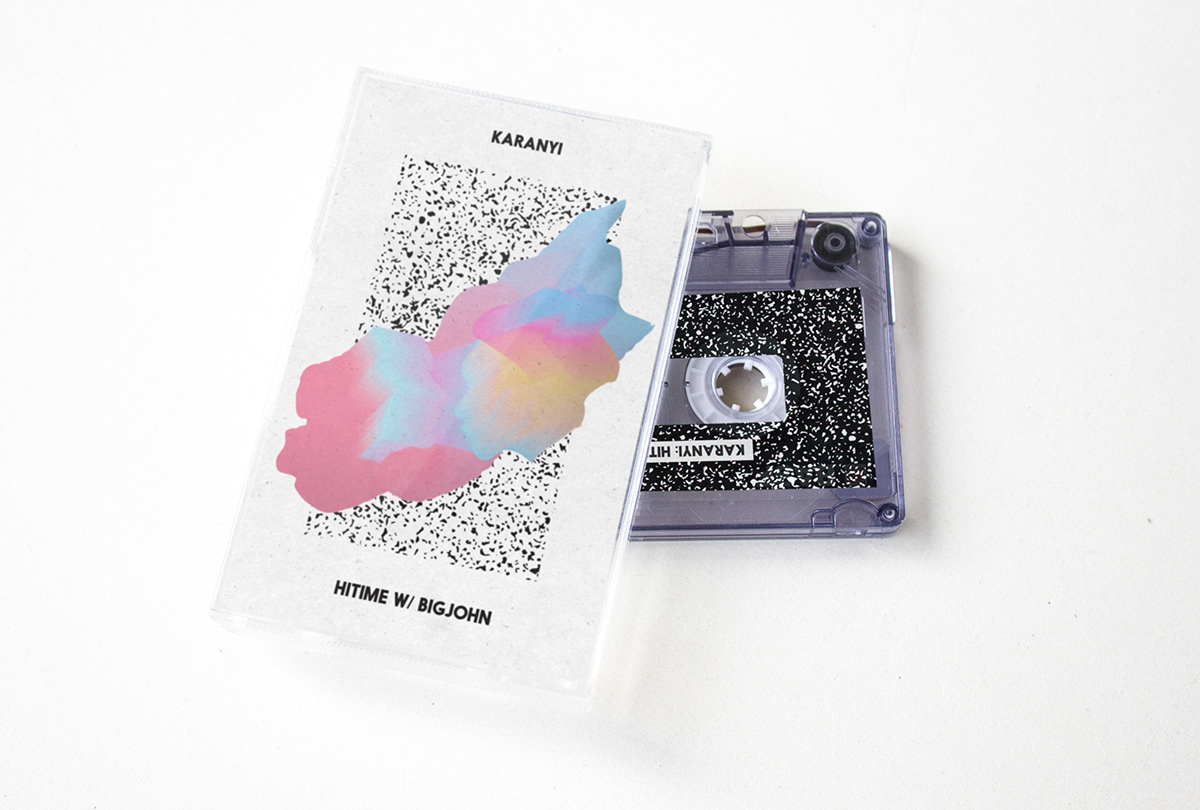
I started work on my process journal. I’ve designed the publication with a couple of key things in mind:
- to allow for addition of more spreads. This is to accommodate future documentation of the project, especially of the actual output when I begin production next month.
- to emphasise the “work-in-progress” nature of my project. For design, I am going for an industrial, tactile approach, reflecting the dual, by-hand/digital nature of my working process.
- images scanned from my notebooks will be printed b&w on newsprint paper, and accompanying screenshots will be printed (colour) on transparency film.
At this point, I’ve settled the materials for the process journal, but I don’t have a fixed outcome of the journal yet. Above points are just some of the main ideas that I want to convey through the design of the process journal. I might have to print everything and then go for a more intuitive outcome for the finishing.
Some spreads and experimentation:
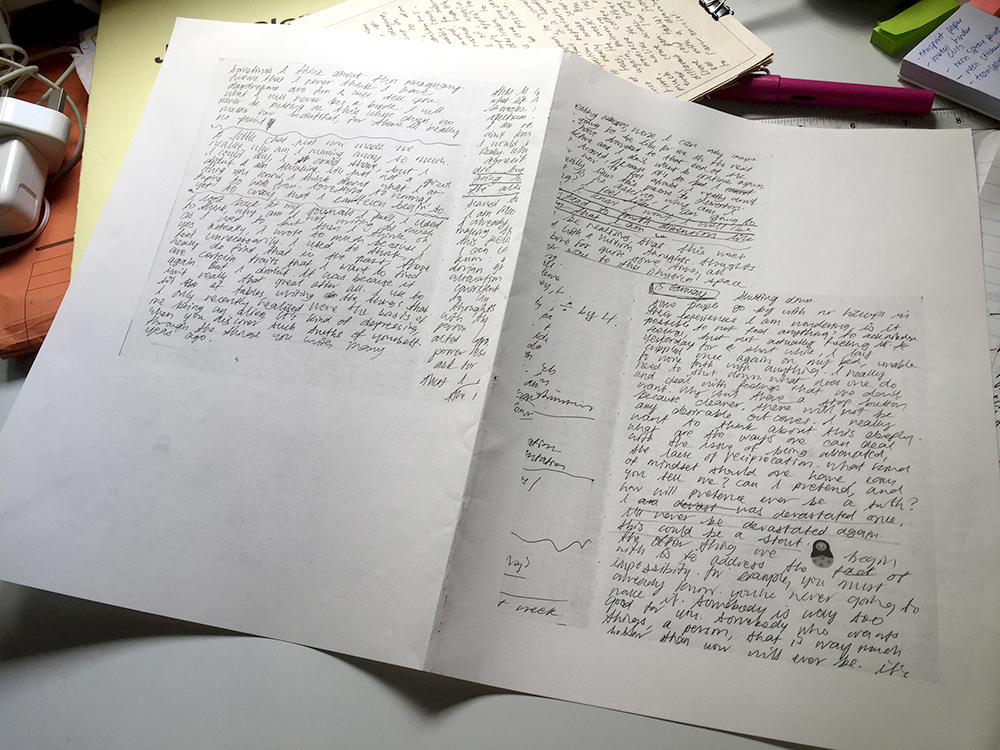

I will be printing this from my home printer, for convenience and for more opportunities to experiment. Most print shops are not likely to allow me to print on newsprint because it will jam their printers. I’ve found a way to bypass the A4 limitation of my home printer and printing on an A3, although that took quite a few trials and errors that made me reconsider how I will design the publication.
If you’re wondering how that is done: I begin with a folded A3 piece of Advocate Rough (I forgot the gsm, it is the lowest one available from Fancy Paper). Pressed really hard on the crease. Exported InDesign file as Pages. Print as per usual (don’t check the double-side printing), feeding the paper twice. Best results would be on low gsm paper. I’ve changed my pagination to accomodate this printing technique. It is still perfect bind, just that it’s printed on one side and folded in half. There’s probably a name for this style of binding or something, but I honestly don’t know what it’s called…
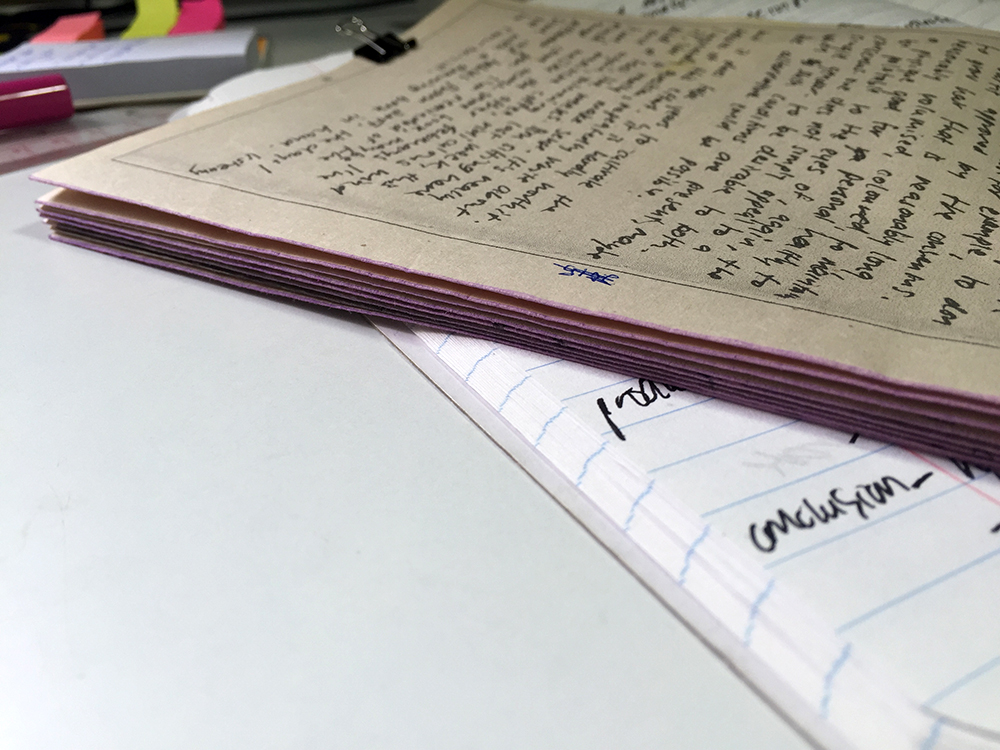
Also tried painting on the sides of the paper. Ran a sponge from a cheap ink set along the edges. I find it works well for the newsprint I’m using, it kind of seeps into the paper in a nice way. Just need to use a more pigmented ink.
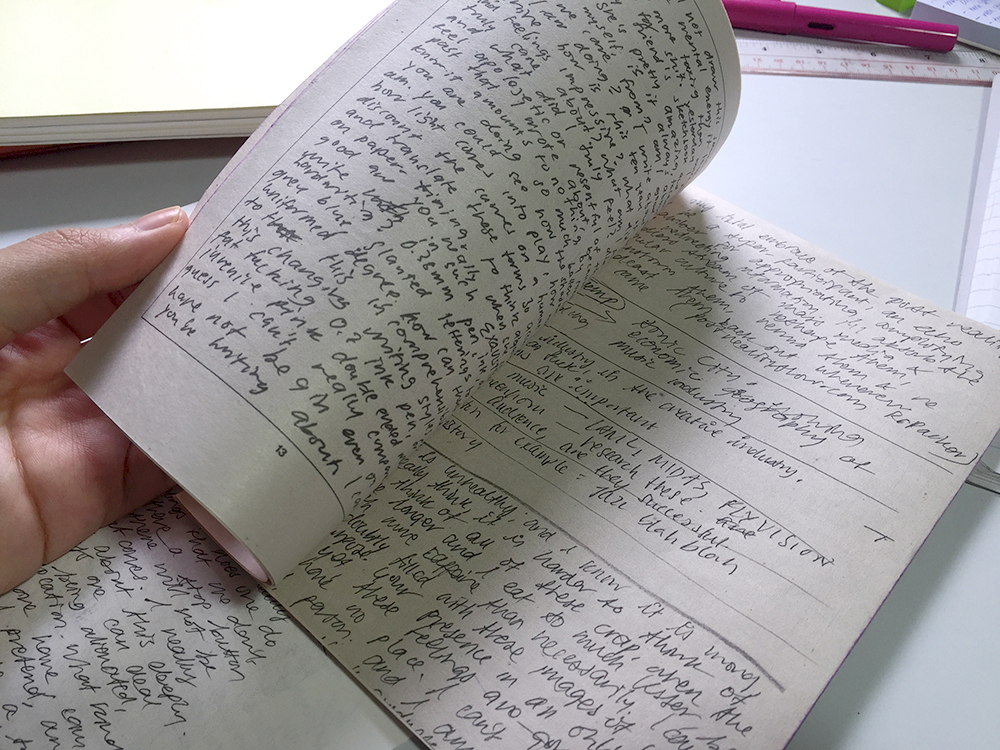
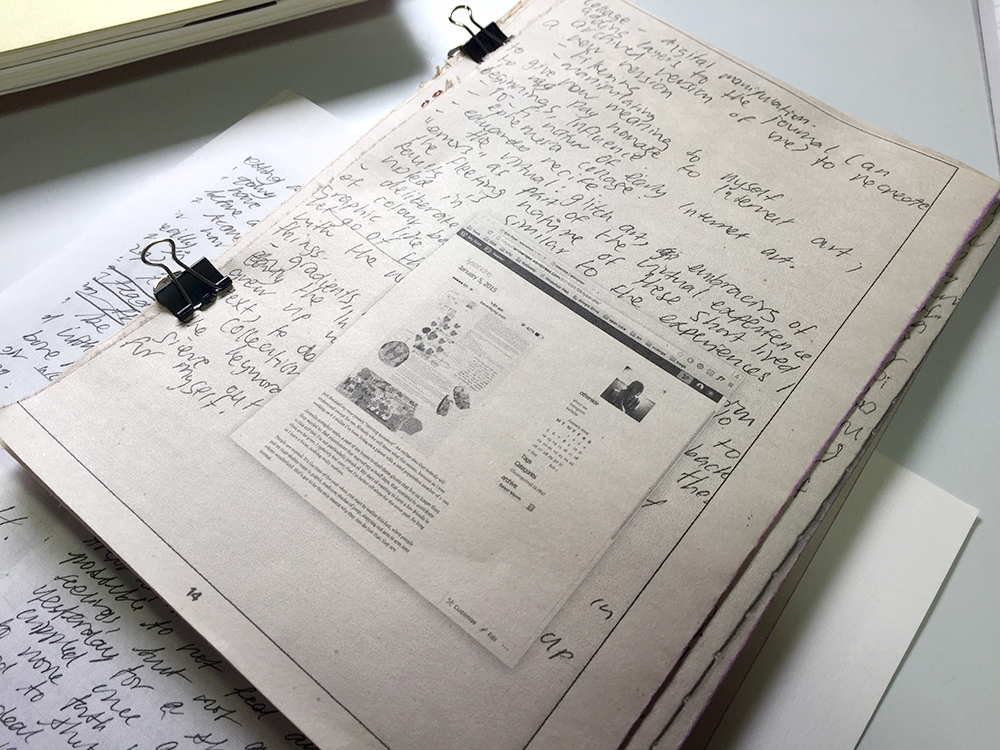

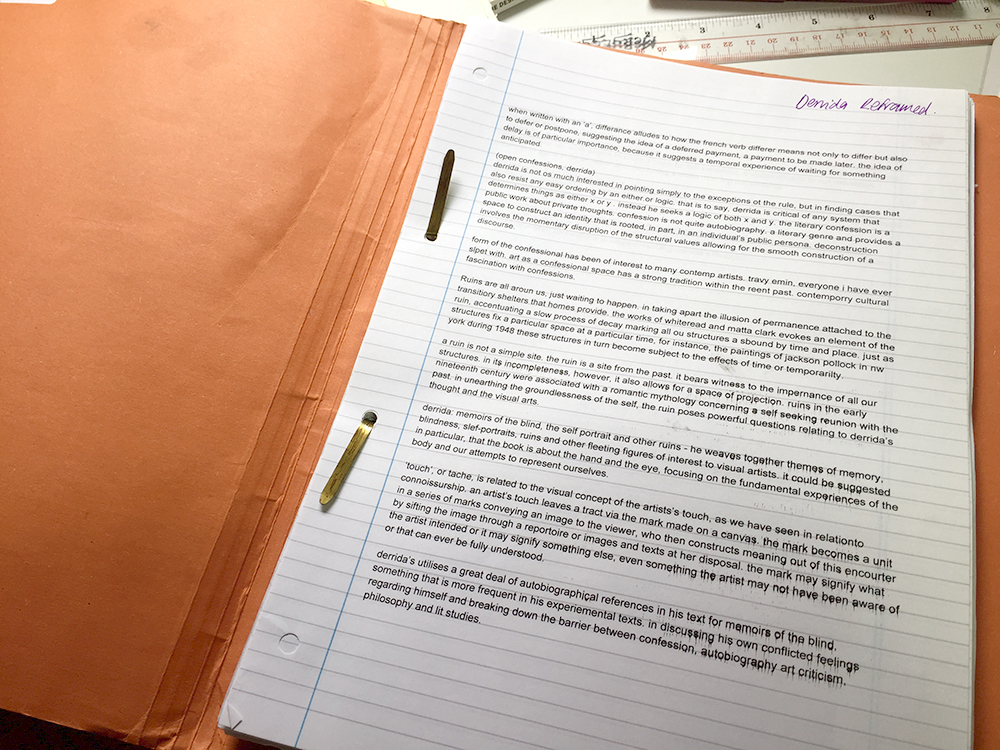
Taking design inspiration from the file that I use to keep my fyp notes.
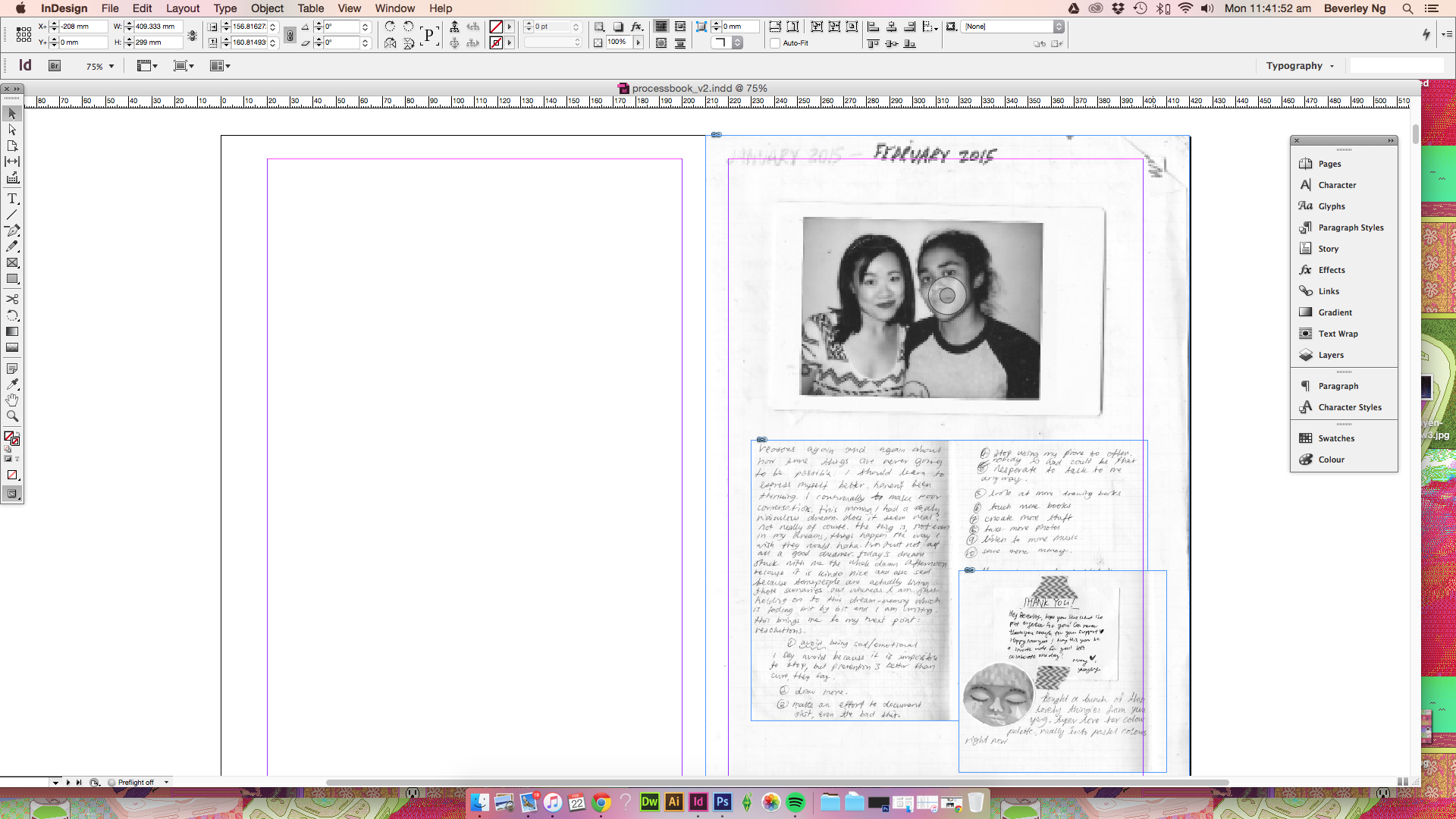
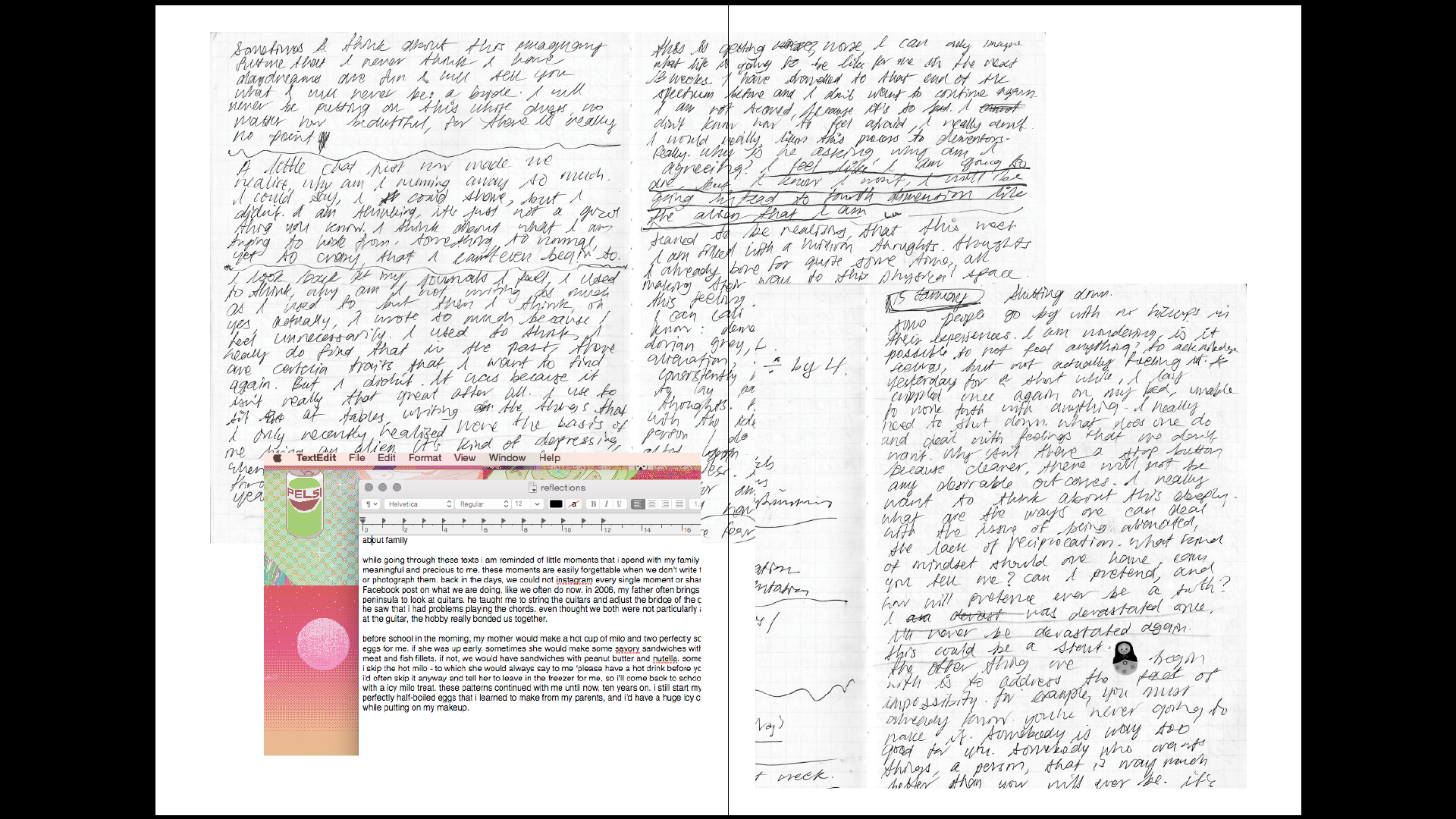
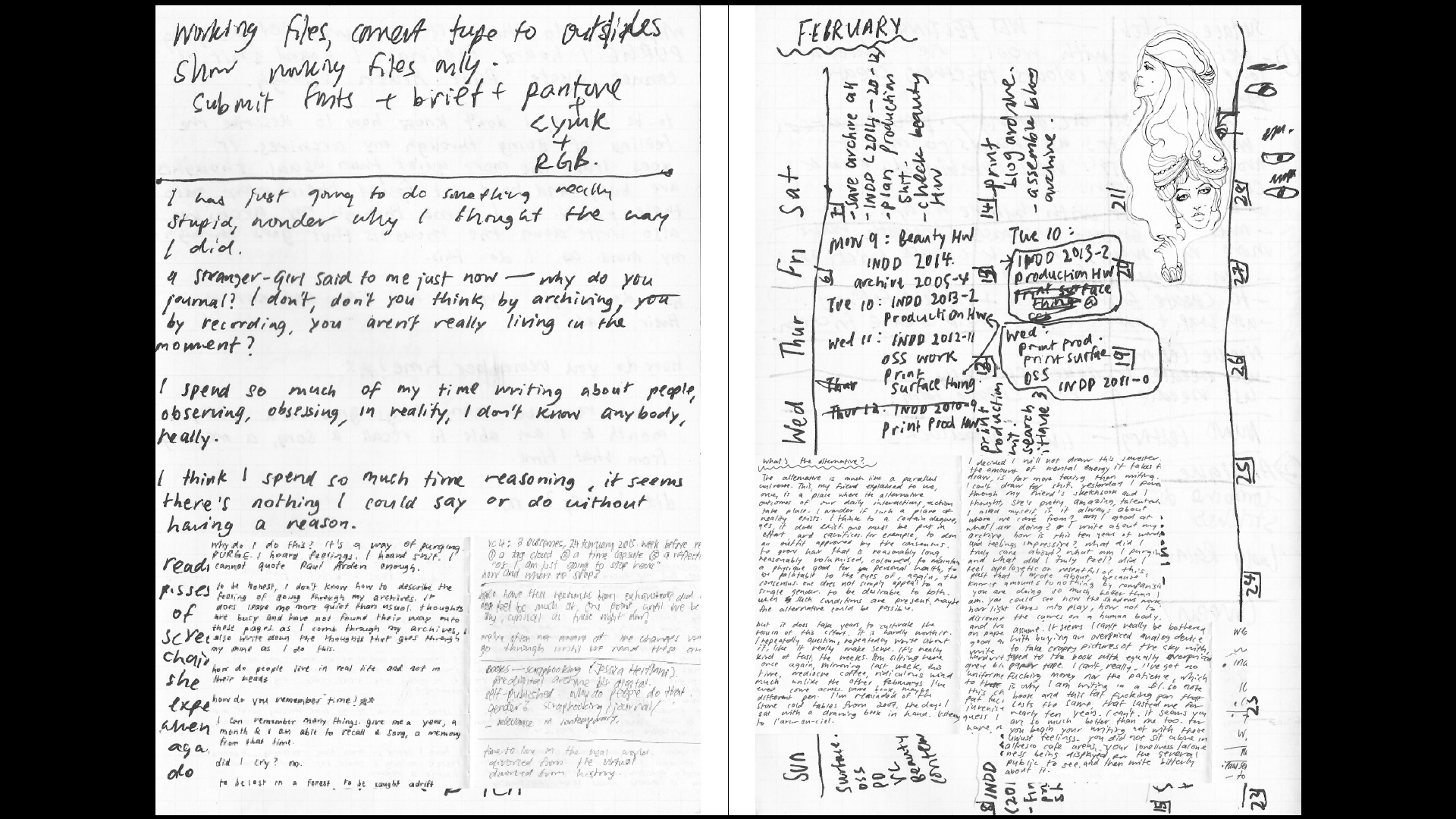
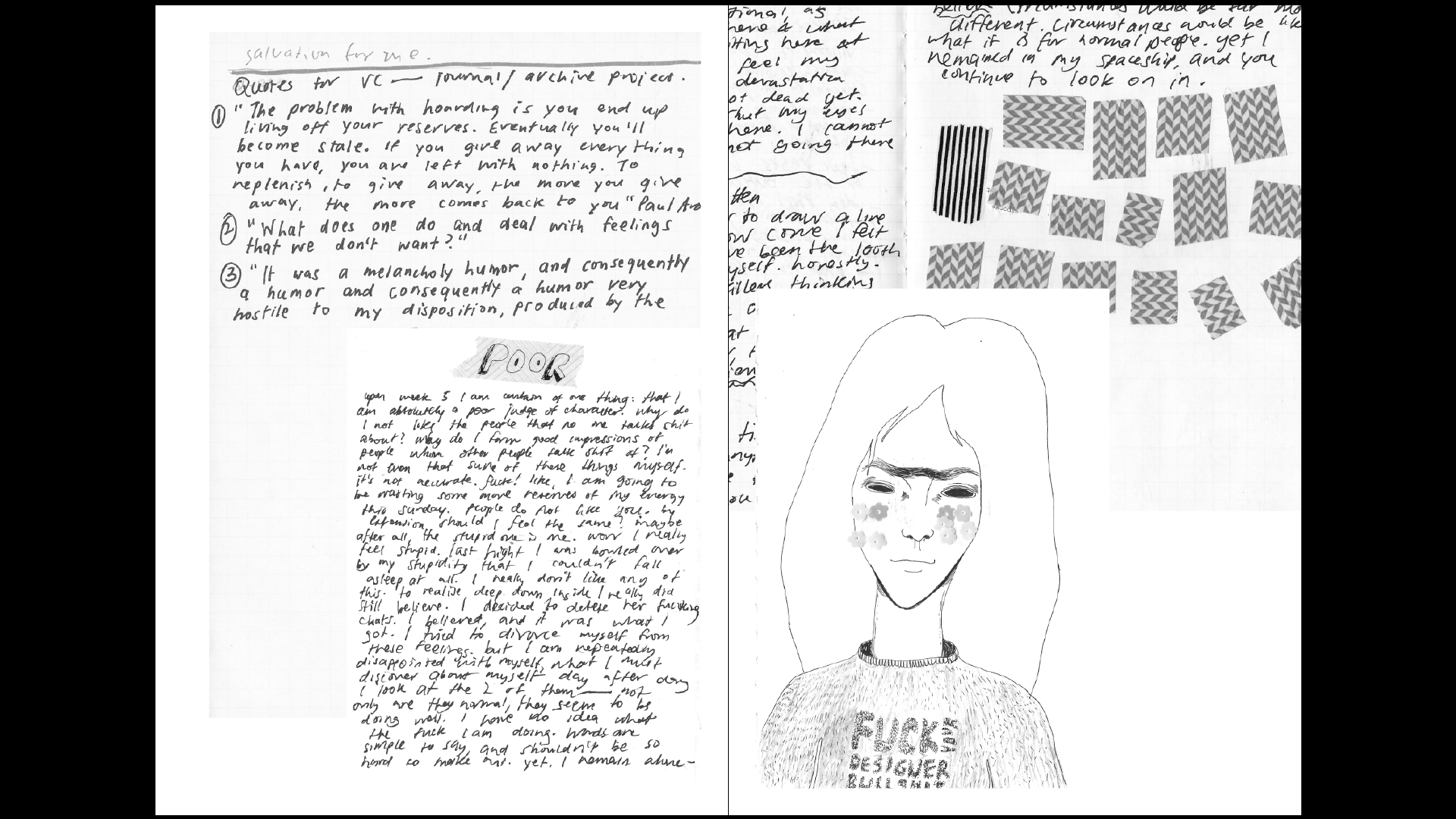
InDesign spreads. Adding the screenshots layer in a separate document and sending it for laser printing on transparency film.
Goal for today is to complete this document.
This weekend I will be starting work on visualising my blog entries. Printing it all out on transparency film too.
Trying to get these things out before March, which I’ve designated for production on actual output.
Also writing my report at the same time. Going back and forth between writing and making refreshes my thinking and lessen the chances of feeling stuck at one thing (and then not doing anything).

